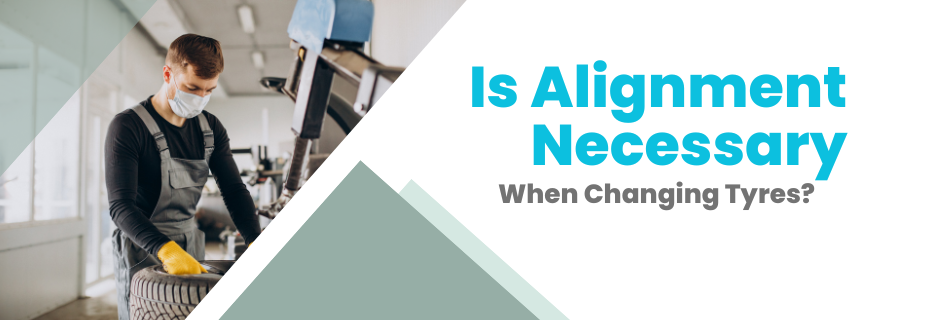
The question frequently crosses our minds: “Is alignment necessary after replacing tyres?” The answer is a definite yes. Experts recommend this practice for potential warranty benefits and to ensure that all wheels make even contact with the road surface. Beyond warranty advantages, performing alignment can help detect minor issues with all four tyres, making it an essential routine for the overall well-being of your vehicle and the protection of its wheels. Take advantage of this opportunity.
How do I check if my car tyres need an alignment?
Consider how long it’s been since the last tyre alignment to determine if your car needs one. It might be time if it’s been 57,000 kilometres or three years. If you’ve driven on rough roads for a year, it’s also a good idea to check.
One big clue is if your car turns to one side quickly. Ensure your car tyres are properly inflated, find a flat road with little traffic, and drive straight at 30 mph. If the car pulls to one side without you steering, it’s likely time for an alignment.
Besides mileage, there are other signs that your tyres might need alignment:
- If you hit a curb.
- If you drive into a pothole or hit a significant bump.
- If you notice uneven wear on your car tyres.
- If the steering wheel starts vibrating suddenly while in motion.
- If there’s excessive noise on the road.
- If you hear strange yells when turning.
- If you recently installed a lift kit.
- If you replace suspension or steering components.
- If your car tyres show rounded wear on the outer edges.
So, “Is alignment necessary when replacing tyres?” The simple answer is yes. It’s a good practice that can be crucial in maintaining your car’s overall health and help protect your vehicle’s warranty.
How often should I get my car’s tyres aligned?
As mentioned, the most apparent reason to align your car’s tyres is when something feels off during your drive. If your driving experience isn’t smooth, it’s time for an alignment.
Installing Brand-new Tyres
When installing brand-new tyres, it’s a good practice to have all four wheels aligned. New tyres need to make proper contact with the road surface, and this helps prevent uneven wear. While some car owners skip this step, it’s crucial for maintaining tyre quality and ensuring safety.
Yearly Tyre Alignment
Even if your car doesn’t encounter rough roads, having a professional alignment check once or twice a year is a good practice. Misalignment signs can appear unexpectedly, and regular maintenance can help catch any issues early.
Tyre Alignment after Replacing a Suspension Part
After replacing a suspension part, especially in the wheel areas, it’s advisable to align the tyre angles to prevent misalignment. Contact a local wheel and tyre shop in Sydney to request an additional test.
Manual vs Digital Tyre Alignment
Tyre alignment can be performed digitally and manually, which vary in price. Digital alignment, though pricier, provides higher-quality equipment and labour. While the upfront cost is higher, it pays off with precise, long-term maintenance.
In digital alignment, a mechanic drives the car onto a lift rack, attaches brackets and electronic sensors to the tyres, and uses a console with cameras to record measurements. The software compares these measurements against the manufacturer’s specifications, and the mechanic makes necessary adjustments with the help of the machine to achieve the correct alignment.
Contact Eagle Tyres
Drive straight to Eagle Tyres, the trusted tyre shop in Sydney to replace your car tyres with high-quality tyres from reputed tyre brands, including Bridgestone Tyres, Achilles Radial, Continental, Good Year, BF Goodrich, Hankook, Dunlop, Kumho, Falken, and Atturo. Alternatively, you can buy tyres online from Eagle Tyres, offering the best value.
The Bottom Line
Prioritising tyre alignment is essential, especially after replacing them with brand-new tyres. This proactive step helps prevent potential issues arising from misalignment after tyre installation. It’s crucial to emphasise the importance of consulting with a mechanic to thoroughly check suspension components, such as struts and shocks, brake rotors, and the driveshaft.
Addressing these aspects alongside tyre alignment contributes to your vehicle’s overall safety, performance, and longevity. Remember, regular maintenance and attention to these details will enhance your driving experience and play a vital role in ensuring the optimal functionality of your car.






